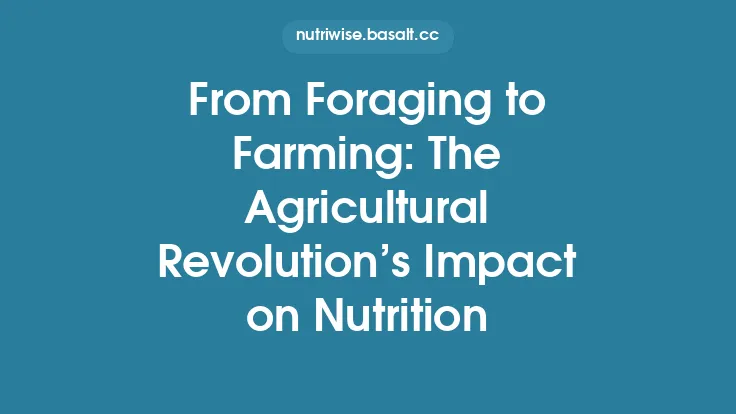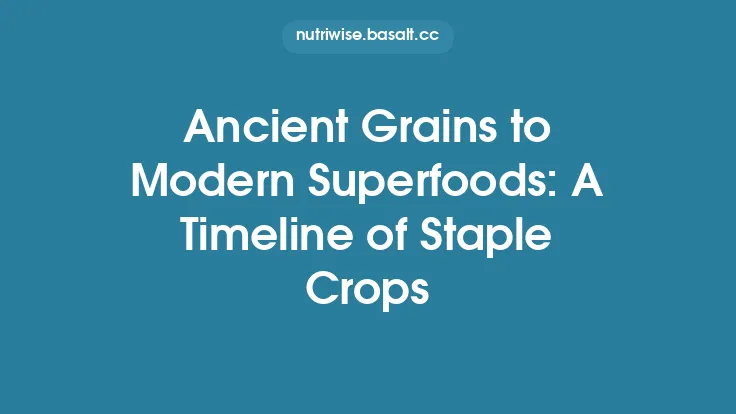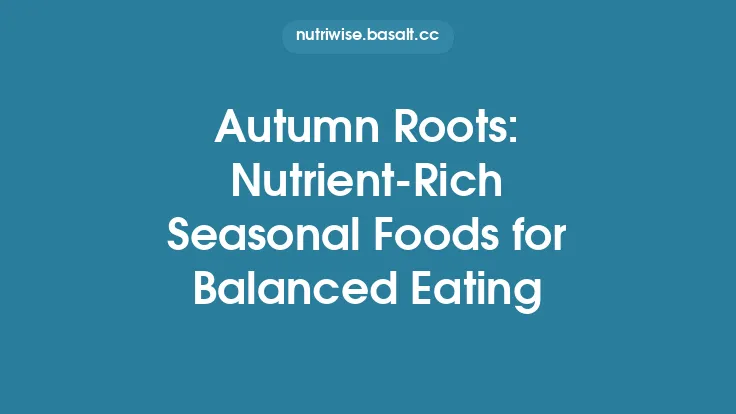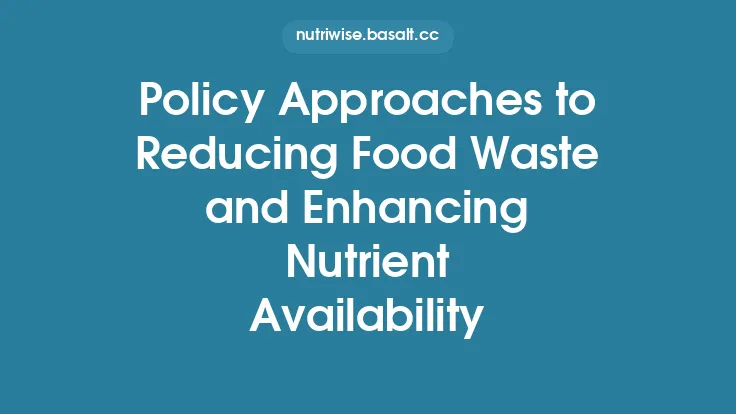Underutilized foods—often called “neglected,” “forgotten,” or “orphan” crops—are plant and animal species that have historically been cultivated on a modest scale, typically for local consumption, cultural rituals, or specific ecological niches. Though they may be well‑known within particular regions, they receive little attention in global commodity markets, research agendas, and mainstream agricultural policies. This marginal status masks a remarkable potential: each underutilized species carries a unique set of genetic traits, agronomic characteristics, and ecological interactions that can broaden the genetic base of our food system and fortify agricultural biodiversity.
What Are Underutilized Foods?
Underutilized foods encompass a wide spectrum of organisms, including:
- Cereals and pseudocereals – such as teff (Eragrostis tef), fonio (Digitaria exilis), and amaranth (Amaranthus spp.).
- Legumes – like bambara groundnut (Vigna subterranea), lupin (Lupinus spp.), and winged bean (Psophocarpus tetragonolobus).
- Roots and tubers – including oca (Oxalis tuberosa), taro (Colocasia esculenta), and African yam bean (Sphenostylis stenocarpa).
- Fruits and nuts – such as baobab (Adansonia digitata), marula (Sclerocarya birrea), and the Indian gooseberry (Phyllanthus emblica).
- Animal products – for example, the milk of indigenous goat breeds, quail eggs, and certain edible insects that have been part of local diets for centuries.
These species are often well‑adapted to marginal environments—drylands, high‑altitude zones, flood‑prone valleys, or soils with low fertility—where major staple crops struggle to thrive.
Agricultural Biodiversity: Concepts and Importance
Agricultural biodiversity refers to the variety and variability of living organisms that are directly or indirectly involved in food production. It includes:
- Genetic diversity within a species (different landraces, cultivars, and wild relatives).
- Species diversity across crops, livestock, and associated organisms (pollinators, soil microbes, pests).
- Ecosystem diversity in the agricultural landscape (field margins, agroforestry, mixed‑cropping systems).
A robust agricultural biodiversity base underpins ecosystem services such as pollination, pest regulation, nutrient cycling, and water retention. When the genetic pool narrows—through reliance on a handful of high‑yielding varieties—the system becomes more vulnerable to biotic and abiotic shocks.
How Underutilized Species Expand Genetic Resources
- Unique Alleles for Stress Tolerance
Many underutilized crops have evolved under extreme conditions. For instance, teff tolerates waterlogged soils, while fonio completes its life cycle within 6–8 weeks, escaping drought stress. Their genomes harbor alleles for heat tolerance, salinity resistance, and disease avoidance that are absent in mainstream cultivars.
- Broad Phenotypic Plasticity
Species like the African yam bean display a remarkable ability to fix atmospheric nitrogen, produce edible leaves, tubers, and seeds, and thrive on poor soils. This multifunctionality offers breeders a toolbox of traits that can be introgressed into other crops.
- Preservation of Wild Relatives
Some underutilized foods are semi‑wild or directly derived from wild progenitors. Maintaining their cultivation preserves gene flow corridors between cultivated and wild populations, reducing the risk of genetic erosion.
Ecological Advantages of Cultivating Underutilized Crops
- Reduced Input Requirements
Many of these species have low fertilizer and pesticide needs because they are naturally adapted to local pest complexes and nutrient-poor soils. This lessens chemical runoff and the associated impacts on surrounding ecosystems.
- Complementary Growth Patterns
Crops such as pigeon pea (Cajanus cajan) and millet can be intercropped, where one species’ canopy shades the soil, suppressing weeds, while the other fixes nitrogen, enhancing soil fertility. Such complementary interactions increase overall system productivity without expanding cultivated area.
- Habitat Heterogeneity
Introducing a mosaic of underutilized species creates structural diversity in fields, offering microhabitats for beneficial insects, earthworms, and soil microbes. This heterogeneity can improve natural pest control and soil aeration.
Resilience to Climate Variability and Stressors
Climate models predict more frequent heatwaves, erratic rainfall, and salinization of arable lands. Underutilized foods often possess:
- Drought‑avoidance mechanisms – e.g., deep root systems in sorghum landraces that tap subsoil moisture.
- Heat‑stable reproductive phases – such as the early flowering of certain amaranth varieties, which escape terminal heat stress.
- Salinity tolerance – like the halophytic qualities of quinoa (Chenopodium quinoa) that allow growth in saline soils.
By integrating these crops into production systems, farmers gain a portfolio of climate‑resilient options, reducing the risk of total crop failure.
Soil Health and Agroecological Interactions
Underutilized legumes (e.g., bambara groundnut) contribute to nitrogen enrichment through symbiotic rhizobia, improving soil organic matter. Root exudates from tuber crops such as oca stimulate beneficial microbial communities that enhance phosphorus solubilization. Moreover, the residue left after harvest often decomposes more rapidly than that of high‑lignin cereals, returning nutrients to the soil and reducing the need for external amendments.
Integrating Underutilized Foods into Farming Systems
- Crop Rotation and Relay Cropping
Rotating a staple like wheat with a legume such as lupin can break pest cycles and replenish soil nitrogen. Relay cropping—planting a fast‑maturing underutilized crop alongside a slower‑growing staple—optimizes land use and harvest timing.
- Agroforestry and Perennial Systems
Species like moringa (Moringa oleifera) can be interplanted with annual crops, providing shade, leaf litter, and a secondary harvest of nutritious leaves or pods.
- Participatory Breeding
Engaging smallholder farmers in selection processes ensures that new varieties retain locally valued traits (taste, cooking qualities) while improving agronomic performance.
Breeding, Research, and Conservation Strategies
- Genomic Characterization
Advances in next‑generation sequencing have accelerated the cataloguing of genetic diversity in orphan crops. Reference genomes for teff, fonio, and African yam bean now exist, facilitating marker‑assisted selection.
- Ex Situ and In Situ Conservation
Seed banks (e.g., the International Center for Agricultural Research in the Dry Areas) store germplasm, while community seed fairs maintain living collections on farms, preserving both genetic material and traditional knowledge.
- Pre‑Breeding Programs
Introgressing stress‑tolerance genes from wild relatives into cultivated lines creates “pre‑breeding” material that can later be used by commercial breeding pipelines.
Economic and Market Pathways for Scaling Up
- Niche Value Chains
Specialty markets for gluten‑free flours (teff, amaranth) and “superfood” powders (baobab, moringa) have demonstrated consumer willingness to pay premium prices, incentivizing larger‑scale production.
- Processing Innovations
Developing low‑cost milling, fermentation, and extrusion technologies tailored to underutilized grains can improve shelf life and expand product applications (e.g., snack bars, fortified porridges).
- Co‑operative Models
Farmer cooperatives can aggregate small‑holder output, negotiate better prices, and invest in post‑harvest infrastructure, reducing market entry barriers.
Policy Frameworks and Institutional Support
- Inclusion in National Food Security Plans
Recognizing underutilized foods as strategic crops in agricultural policies can unlock funding for research, extension, and seed distribution.
- Public‑Private Partnerships
Collaboration between research institutes, NGOs, and agribusinesses can accelerate the development of improved varieties and market linkages.
- Incentive Mechanisms
Subsidies for seed multiplication, tax breaks for processing facilities, and certification schemes (e.g., “Biodiversity‑Friendly”) can stimulate investment.
Challenges and Future Directions
While the promise of underutilized foods is clear, several hurdles remain:
- Limited Agronomic Knowledge – Many orphan crops lack comprehensive agronomic manuals, making adoption risky for farmers unfamiliar with their management.
- Supply‑Chain Gaps – Inadequate storage, transport, and processing infrastructure can lead to post‑harvest losses.
- Consumer Awareness – Lack of familiarity with taste, cooking methods, and nutritional benefits can impede market demand.
- Intellectual Property Concerns – Ensuring that benefits from genetic improvements are shared equitably with the communities that have conserved these species for generations.
Addressing these challenges will require coordinated research, capacity building, and inclusive governance. By systematically integrating underutilized foods into agricultural landscapes, we can expand the genetic foundation of our food system, enhance ecosystem resilience, and move toward a more sustainable, biodiverse future.





